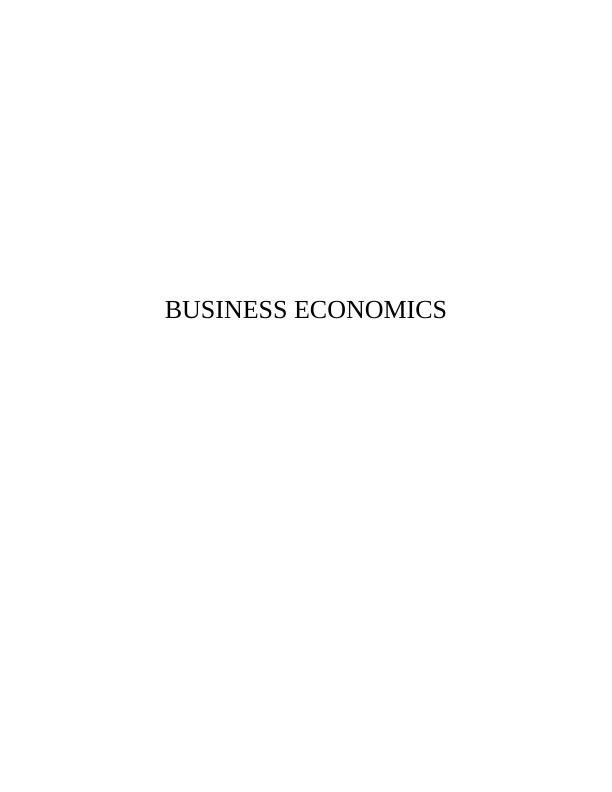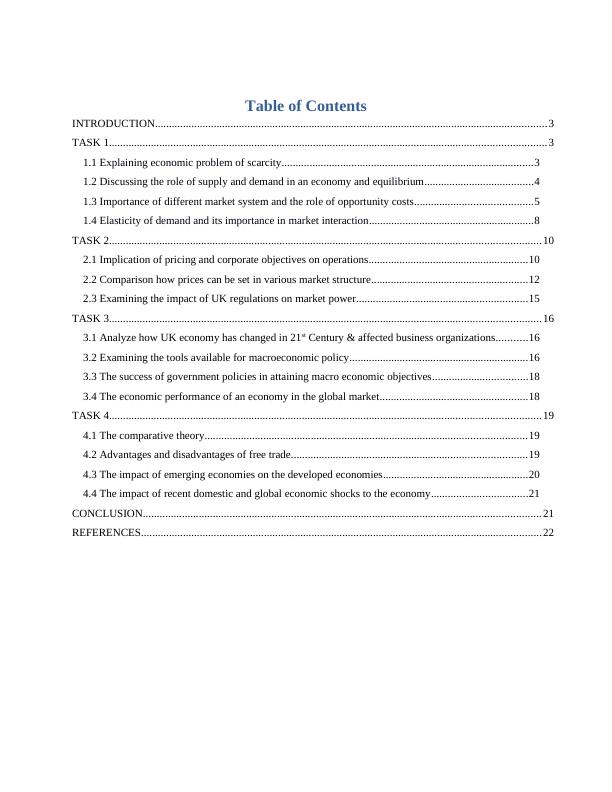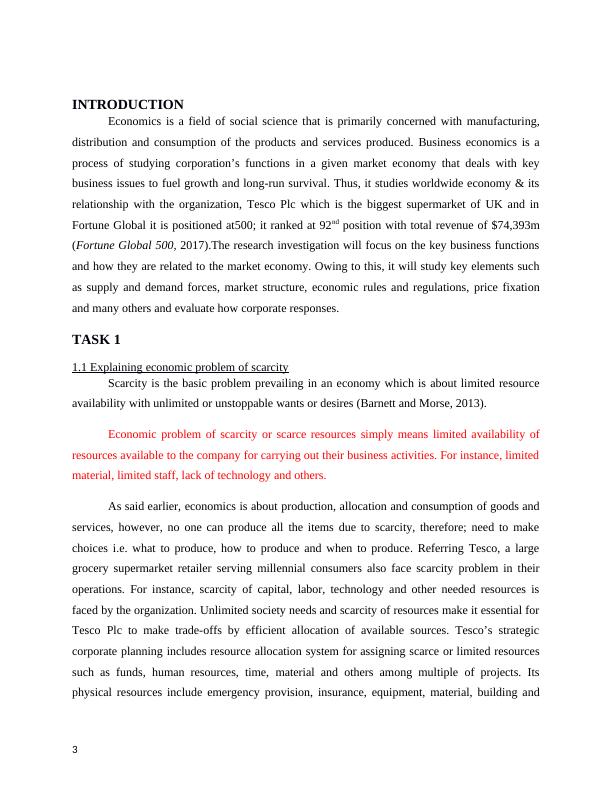Introduction to the Business Economics
25 Pages6267 Words52 Views
Added on 2020-06-06
Introduction to the Business Economics
Added on 2020-06-06
ShareRelated Documents
BUSINESS ECONOMICS

Table of ContentsINTRODUCTION............................................................................................................................................3TASK 1............................................................................................................................................................31.1 Explaining economic problem of scarcity..........................................................................................31.2 Discussing the role of supply and demand in an economy and equilibrium.......................................41.3 Importance of different market system and the role of opportunity costs..........................................51.4 Elasticity of demand and its importance in market interaction...........................................................8TASK 2..........................................................................................................................................................102.1 Implication of pricing and corporate objectives on operations.........................................................102.2 Comparison how prices can be set in various market structure........................................................122.3 Examining the impact of UK regulations on market power.............................................................15TASK 3..........................................................................................................................................................163.1 Analyze how UK economy has changed in 21st Century & affected business organizations...........163.2 Examining the tools available for macroeconomic policy................................................................163.3 The success of government policies in attaining macro economic objectives..................................183.4 The economic performance of an economy in the global market.....................................................18TASK 4..........................................................................................................................................................194.1 The comparative theory...................................................................................................................194.2 Advantages and disadvantages of free trade....................................................................................194.3 The impact of emerging economies on the developed economies....................................................204.4 The impact of recent domestic and global economic shocks to the economy..................................21CONCLUSION..............................................................................................................................................21REFERENCES...............................................................................................................................................22

INTRODUCTIONEconomics is a field of social science that is primarily concerned with manufacturing,distribution and consumption of the products and services produced. Business economics is aprocess of studying corporation’s functions in a given market economy that deals with keybusiness issues to fuel growth and long-run survival. Thus, it studies worldwide economy & itsrelationship with the organization, Tesco Plc which is the biggest supermarket of UK and inFortune Global it is positioned at500; it ranked at 92nd position with total revenue of $74,393m(Fortune Global 500, 2017).The research investigation will focus on the key business functionsand how they are related to the market economy. Owing to this, it will study key elements suchas supply and demand forces, market structure, economic rules and regulations, price fixationand many others and evaluate how corporate responses. TASK 11.1 Explaining economic problem of scarcityScarcity is the basic problem prevailing in an economy which is about limited resourceavailability with unlimited or unstoppable wants or desires (Barnett and Morse, 2013). Economic problem of scarcity or scarce resources simply means limited availability ofresources available to the company for carrying out their business activities. For instance, limitedmaterial, limited staff, lack of technology and others. As said earlier, economics is about production, allocation and consumption of goods andservices, however, no one can produce all the items due to scarcity, therefore; need to makechoices i.e. what to produce, how to produce and when to produce. Referring Tesco, a largegrocery supermarket retailer serving millennial consumers also face scarcity problem in theiroperations. For instance, scarcity of capital, labor, technology and other needed resources isfaced by the organization. Unlimited society needs and scarcity of resources make it essential forTesco Plc to make trade-offs by efficient allocation of available sources. Tesco’s strategiccorporate planning includes resource allocation system for assigning scarce or limited resourcessuch as funds, human resources, time, material and others among multiple of projects. Itsphysical resources include emergency provision, insurance, equipment, material, building and3

others, however, technological resource includes intellectual property, skills and experience,software, patent, copyright and others. Tesco allocate, administrating and managing resourcesfor primary activities i.e. inbound and outbound logistic, sales & marketing, servicing and otheroperations considering increased value delivery to the user which minimize cost and maximizereturn (Tgarakaj, 2016). As Tesco operates in a free or capitalist economy, therefore, resourceallocation is in the hand of business itself. It allocate resources keeping into account theirproduction targets and business success. Moreover, material management, cost controlmechanism, staff training, quality control and others are also followed for ensuring the mosteffective and efficient use of resources. 1.2 Discussing the role of supply and demand in an economy and equilibriumFigure 1 Equilibrium pointSource: Duan and Huang (2014)Supply and demand are the two market forces that decides price. In microeconomics, thequantity of products available in the market is known as supply while the quantum of goodsdemanded by the users is referred as demand. Both the elements are key price regulators andchange in any of these have a direct impact over price fixation (Blau, Ferber and Winkler, 2013).4

Law of demand exhibits that keeping constant all the other factors, raising the productprices results in lesser demand or vice-versa, thus, price & demand shows inverse relationship.Supply curve, on the other side, is upward sloping, indicates that more the availability of goodsin market decline prices or vice-versa (Duan and Huang, 2014). Price of an item is fixed at apoint where demand becomes equal to supply, called equilibrium. Thus, Tesco’s managersforecast possible demand in the market and identify the availability of the item in sector to findout EP. 5

1.3 Importance of different market system and the role of opportunity costsFigure 2 Market system(Source: Market system, 2017)6

End of preview
Want to access all the pages? Upload your documents or become a member.
Related Documents
Business Economics of Tesco Plc : Reportlg...
|24
|8062
|129
Business Economics : Doclg...
|13
|3992
|342
Business Economics Assignment : Marriottlg...
|26
|6104
|43
Business Economics of Iceland Ltd : Reportlg...
|14
|5020
|140
Impact on Economy and Its Business Environment - Reportlg...
|15
|4355
|46
Business Economics Report - Doclg...
|17
|5103
|195
